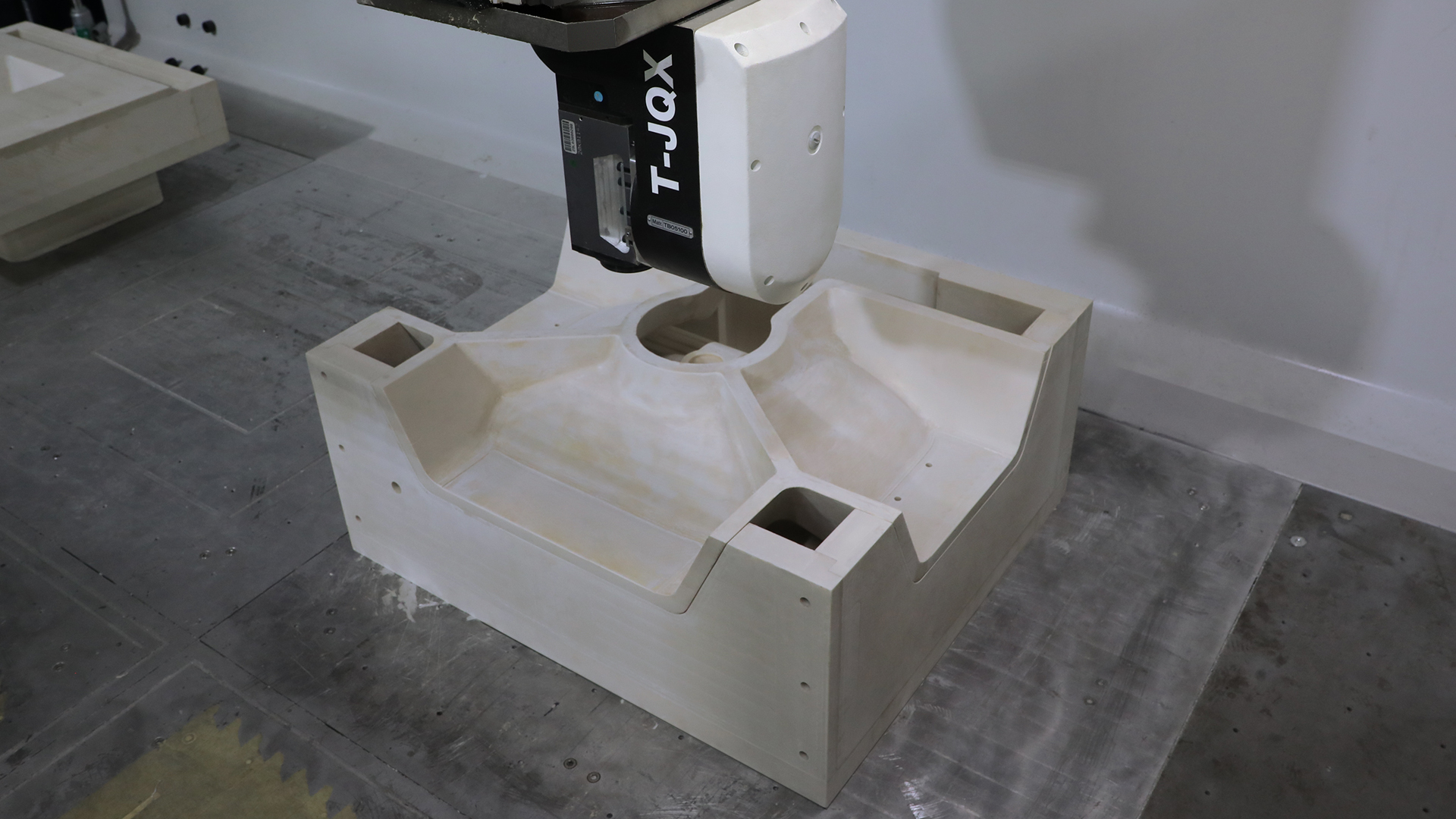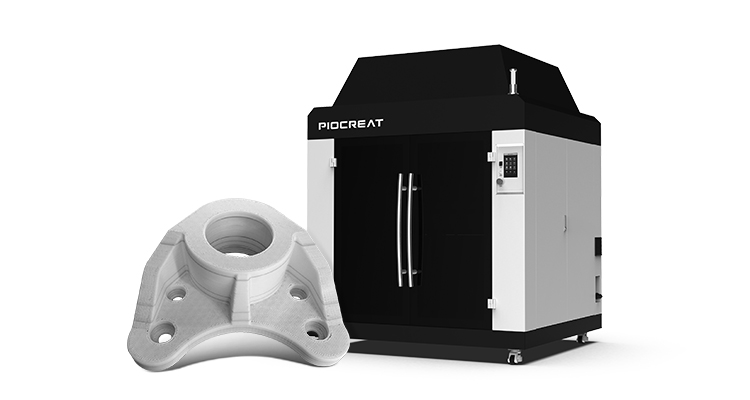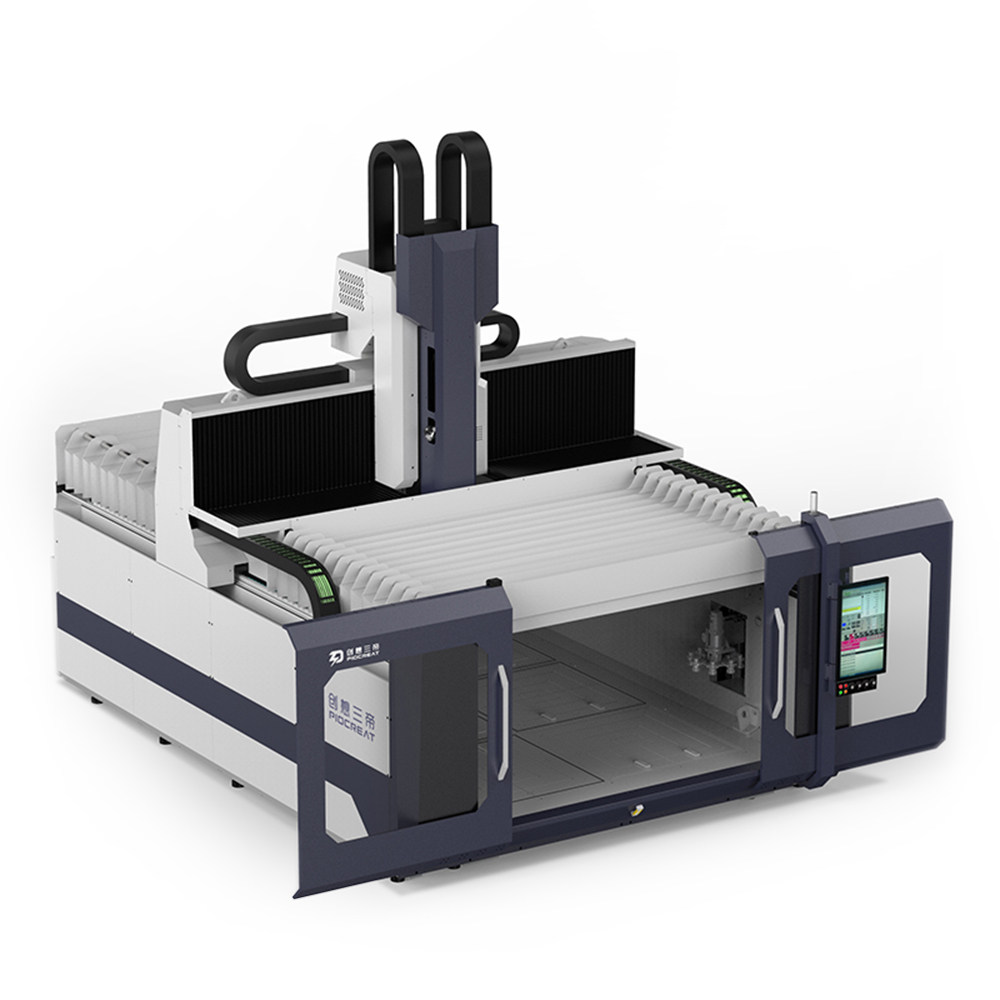In this issue, we will continue to introduce the application of some degradable or special materials in the field of 3D printing and the modification technologies that make their fluidity, morphology and performance meet the requirements. It should be noted that according to the different 3D printing methods, the shape of the required materials is also different. Melt deposition forming (FDM) uses wire, while laser selective sintering (SLS) uses powder.
As most of the commonly used polymer materials in the industry are mainly particles, the secondary processing is required to make silk or powder materials, which increases the use cost of 3D printing consumables. At present, some units have successfully developed 3D printing equipment using particles as raw materials, such as G5, G12 and G40 particle series 3D printers launched by piocrat, which have been applied in various industries and have been affirmed by many enterprises.

With the gradual improvement of human environmental protection awareness, biodegradable thermoplastic resins have also begun to join the ranks of 3D printing consumables. Compared with traditional engineering plastics, bioplastics have lower mechanical strength, and their heat resistance and weather resistance are generally inferior. However, the production and use process are more environmentally friendly and meet the requirements of human green development. More importantly, most of these bioplastics have good biocompatibility, so their 3D printing products have broad application prospects in the medical industry. Typical bioplastics for 3D printing include PLA, PCL and PETG.
Materials
In this issue, we will introduce three common biodegradable 3D printing materials PLA, PCL and PETG and their modification methods. In addition, there are 3D printing applications of new high-performance engineering plastics ppsf.
PLA
PLA and ABS are the two main materials of FDM printing. The printing temperature of PLA is 180-220 ℃, and it can be effectively formed on the support plate at a lower temperature (lower than 70 ℃), but its glass transition temperature is low, only about 60 ℃. Compared with ABS, PLA is easy to adhere and stretch after melting. It does not produce unpleasant smell during printing, and the printed material will hardly shrink. Therefore, even an open printer with simple structure can print relatively large parts, which makes PLA the main consumable of the cheapest entry-level 3D printer. In addition, PLA can obtain printed parts with translucent structure, which is more aesthetic than the usually opaque matte ABS printed parts.
However, as a bioplastics, PLA also has obvious disadvantages. The mechanical properties of this material are poor, and its toughness and impact strength are obviously lower than ABS. It is not suitable to make parts that are too thin or need to bear load.
In order to obtain high-strength PLA printing parts, the modified PLA printing wires can be prepared by melt blending process with appropriate chain extender. The notch impact strength of the printing parts is 140% higher than that of pure PLA materials.
At the same time, the impact strength, heat resistance and elongation at break can be improved by filling or adding polylactic acid, which can make the finished product have the advantages of smooth surface and stable size.
PCL
PCL is a biodegradable polyester with shape memory properties, which has a low melting point (about 60 ℃) and excellent biocompatibility. Therefore, PCL can be used as a good consumable for energy-saving 3D printing, and its printing products are widely used in the medical field, especially in vivo organ repair and cardiac stent.
PCL has good mechanical properties and degradability. However, when PCL material is directly applied to bone, there are still problems that porosity and mechanical properties are not satisfied with the application.
If PCL is applied to 3D printing technology, it is necessary to further improve the mechanical properties, hydrophilicity and other properties of the material. After the PCL material was blended with nano hydroxyapatite, when the content was 20%, the tensile strength and bending strength of the 3D printed sample reached the maximum, which were 23.3 MPa and 21.4 MPa respectively.
In addition, PCL material has certain shape memory effect and has certain potential in 4D printing.
PETG
PETG is a new type of polyester recently applied to 3D printing. It is a copolyester with very low crystallinity and also a new type of bio based plastic. It has excellent optical performance, high gloss surface and good injection processing performance. In addition, it has excellent characteristics such as non-toxic and environmental protection. Compared with PLA or PCL, this material has relatively high toughness and impact strength, while still maintaining a low shrinkage rate. It is suitable for printed parts with high strength requirements.
However, since 3D printing technology requires higher material toughness, PETG materials need to be further toughened. It can also be blended with engineering plastics such as PC to obtain new polymer alloy printing materials with high heat resistance, mechanical strength and good printing performance.
For example, MBS is used as an auxiliary agent, which is a ternary graft copolymer formed by grafting methyl methacrylate (MMA) and styrene (st) onto the macromolecular chain of polybutadiene (PB). The "shell core" structure with methyl methacrylate styrene copolymer as the shell and polybutadiene as the core has high impact resistance and is widely used for toughening and modification of various plastics. MMA in the outer layer of MBS can be compatible with PC, The inner layer is compatible with PETG, so it can also be used as a compatibilizer of PETG / PC system.
The research shows that the addition of MBS can effectively improve the toughness of PETG / PC / MBS materials, which has a great relationship with the structure of MBS. MBS is a shell core structure elastomer, which has both rubber core structure and can improve the impact strength and elongation at break of the materials. It also has a shell structure with high modulus, so that the strength of the composites will not be greatly reduced while the bremsstrahlung of the composites is improved.
PPSF (non biological plastic)
Ppsf, commonly known as polyfiber ester, is the material with the highest strength, the best heat resistance and the strongest corrosion resistance among all thermoplastic materials. It is widely used in the fields of aviation, aerospace, transportation and medical industry. The engineering plastic ppsf has a heat-resistant temperature of 207-230 ℃, which is suitable for high-temperature working environment. Among various rapid prototyping engineering materials, ppsf has the highest heat resistance, strength and toughness and chemical resistance.




